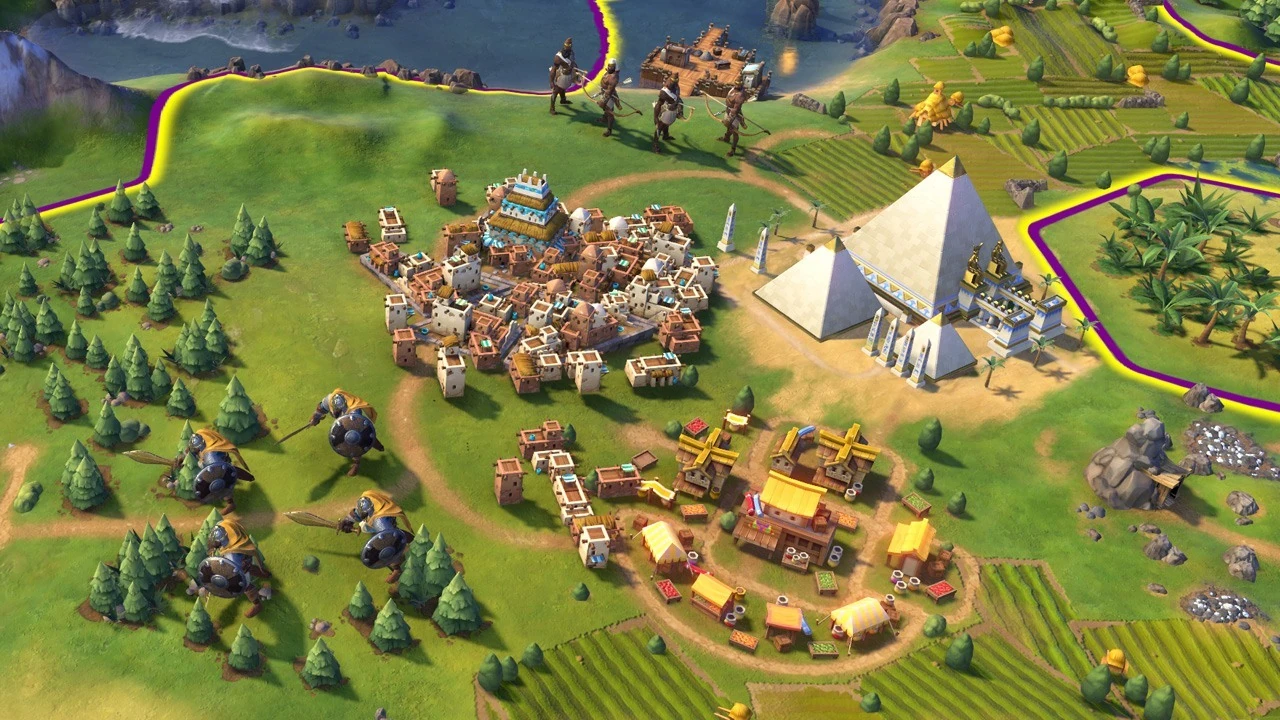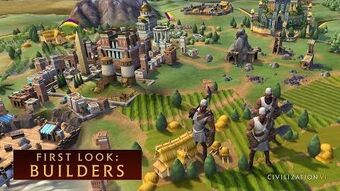Mar 03, 2010 Just to add to what everyone has said around pillaged improvements, pillaged districts and buildings are repaired differently. You have to go to your city's production tab and click on the relevant district or building to repair it.
One of my favorite games is Path of Exile, an action RPG which I find delightfully fun and creative. It’s not the fast and relatively straightforward drop-in action RPG like Diablo 3, it seems a little odd, and has complicated systems. These complications though, lead to creative, fun, and flexible gameplay. It’s more like a deck building game.
How To Fix Pillaged Land Civ 6 Release
I realized that there is a distinction between ‘quick fun’ games, where you want to just sink in for a while and have a good time doing what you already know how to do relatively well, and ‘learning games’ where you have to continue to invest time in learning new complicated mechanics, and eventually achieve a sense of mastery. In these games experts sometimes proclaim the game ‘easy’ because they understand its systems well, but ‘easy’ often costs them hundreds or thousands of hours.
Districts are now placeable through the Plot Editor Districts can now be pillaged by the Placement Tool or Plot Editor. Delete units when a player is edited. Fix case where capital city would have no name if you changed a civ's leader to not match (Should help with mod civs too). Fixed issues with the Plot Editor Improvement Pillaged checkbox. As you’d expect, floods in Civilization 6 can damage tile improvements — even to the point of completely removing those upgrades. Buildings in districts may also be pillaged, city population can be lost, and units on flooded tiles might take damage or be destroyed. You can prevent floods along an entire river by building a single Dam district.
Civ 6 Pillaged Areas
I feel like the Civilization series is very much the learning type of game. I played the earlier Civ games a bit, back to Civ 1 briefly, a bit of Civ 3, and around 12 hours of Civ 5 according to steam. I did ok on low difficulty settings, but I didn’t get to “mastery” really. I think the series is worthy of some learning investment, so I’m going to explicitly treat Civ 6 as a learning experience.

Civ 6 How To Fix Pillaged Tile

So… Playing to learn means that winning is a secondary goal. No restarting when things go badly, I’ll carry through the bad time and try to learn lessons from them (not that I won’t end it when it’s past the point of usefulness. I want to note a few thing that I’ve learned as I go explicitly to help crystalize the knowledge. When I notice problems that might have been remedied with better planning many turns ago, I want to capture that for more thought later. When I have mechanics questions I’d like to raise them, answer them, and maybe do some science or research around them.

Here are some thing I’ve learned in my first default settings game so far:
- Barbarians are a threat early on, and need countered. I recall that they don’t appear where you have vision, so at least nearby scouts are good.
- Settling early can be high value. Picking places is important, and I’m not convinced the recommendations are very good long term. Freshwater from a river, or a one tile connection from a mountain are ideal. Due to 4 extra housing (+6 vs +2) from Aqueduct, is it actually better long term to NOT have fresh water if you planned a one tile gap from a mountain? Or skip Aqueduct? I recall something about Nighborhoods later, so maybe only medium term.
- Escorts are a nice touch. Non military are captured when touched, captured barbarian builders this way. Wat? I recall hearing that settlers can be captured this way…
- Unhappy cities (amenities too low) can revolt, which costs population and generates barbarians. These can be your good units, in my case 2x Conquistadors, my best unit. Not too terrible to clean up with city bombard, but definitely annoying.
- Amenities are somewhat confusing, sources, flow between cities.
- You can ‘race’ a nearby border to claim valuable land by spending gold.
- Gold flows more freely in this version, and fills a lot of gaps.
- Ranged units are powerful, not just for the literal range, but also because they don’t take losses when attacking, even other ranged units. Only while defending.
- The rock-paper-scissors of early units matters, too many chariots and unable to take on spears.
- Unit upgrades only occur on home territory tiles, and can be high value. Slings to archers was helpful. Can pre-plan these, build up an army and save gold, get the tech, and upgrade for an offensive.
- Special resource requirements are problematic, no horses, although I can build chariots. Is that a bug? I got access to swordsmen, but I can’t make any due to lack of iron. Seems to affect game flow.
- My science instinct is strong, but I need to not sacrifice short term health too much.
- Terrain affects combat, rivers boundaries are easy to defend (+5 to defender), hills did something I think.
- Wonders are a race, and you lose the production for no gain if someone beats you there.
- I’m not good at diplomacy yet, it looks challenging. I probably need to manage it well enough not to get double attacked, but for now I’ll plan on getting attacked (DoW = Declaration of War) and let it happen.
- Too little army going into a war, painful to catch up.
- Builders can repair pillaged improvements (e.g. the things they can build) in one turn for no cost. Buildings from the capital need repaired by production.
- Production is like stored time, and efficiency here is super helpful.
- In general, it appears that most science (and civics) have boosts. Ignoring it for now, but later it feels like planning boosts properly could be a significant acceleration.
- War is super distracting from progress, can derail wonders, infrastructure.
- War costs amenities through war weariness.
- How city sieges work is confusing. This helped: http://www.idigitaltimes.com/civ-6-guide-how-siege-cities-and-conquer-your-enemies-564550
- Siege notes: Walls take only 15% dmg by default, protect city, half that from ranged. Siege units explicitly attack walls at full rate, or bypass walls and attack city at full rate. Healing can be stopped by ‘controlling’ all tiles (occupy, or ‘zone of control’ with ranged)
- Capturing vs Razing is an odd choice. If the city is near me and badly placed, is it better to keep, or remove. I recall someone mentioning reconciling cities at the end of a war. I had to turn down peace when winning. because they refused to give my big city back.
- What the heck is Niter?
- Religion is complicated, and I’m unsure of the impact. I’m ignoring it for now, even as Japan rolls through my cities. Lost my initial religion. Not great compared with being spain and having religious oriented bonuses.
This was a big ‘after the fact’ dump a while into my first game. I’d like to leave the blog post open and edit it as I go in future.
